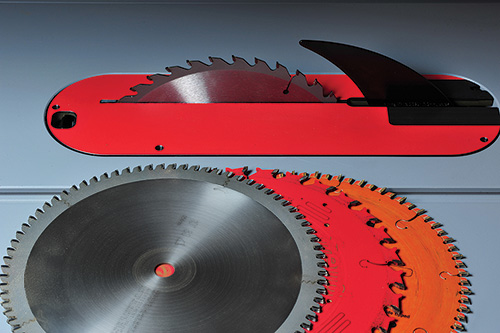
I was recently told that the alignment of the fence for my table saw should be different when using a carbide-tipped blade versus a steel blade. I was also told that the back of the fence should angle away from the blade 0.005″ when using a carbide-tipped blade. But the fence should be parallel with the blade when it is steel. The reasoning being that the carbide tips extend slightly past the blade, and these adjustments provide clearance. Is this correct?
Michael Dresdner: Nope. The setup should be the same, and IMO it should be dead parallel, especially if, like me, you use the fence on both sides of the blade.
Lee Grindinger: Back when I was a young lad starting out in this trade the standard in this country (U.S.A.) was to set the fence as you describe, that is, running out at the back of the blade. The reason for this was to allow space for lumber to move as you ripped it so it would not bind against the blade if it warped or twisted as it was being sawn. I don’t think this led to less accurate work or any problems, because the wood tended to follow the line of the blade rather than the line of the fence. So the cuts were clean and safely done.
Then the Europeans invaded and pointed out to us how silly it is, to purposefully set your fence out of parallel with the saw blade. They are correct, it is silly. However, the problem still remains of what happens when a board warps when being sawn and binds itself against the blade. The best solution is to set up the saw so the fence does not extend beyond the front of the blade. Set up this way the wood can do whatever it wants once it’s sawn and it will not bind in any way. American fence manufacturers are beginning to incorporate this capability into fence systems and although it takes a bit of getting used to, it is a safer way to saw not only solids but sheet goods as well. Until you get a fence with this capability, set your current fence dead-on parallel with the blade. If you have to saw wood that binds, clamp an auxiliary fence to your fence that does not extend beyond the front of the blade.
“The materials used to make saw teeth or the patterns of these teeth have nothing to do with how a fence is set. All steel and carbide blades have a set to them. Set is the amount that a tooth extends beyond the flat part of the blade, and all blades need this set to avoid burning the stock as it’s sawn and reduce resistance.





